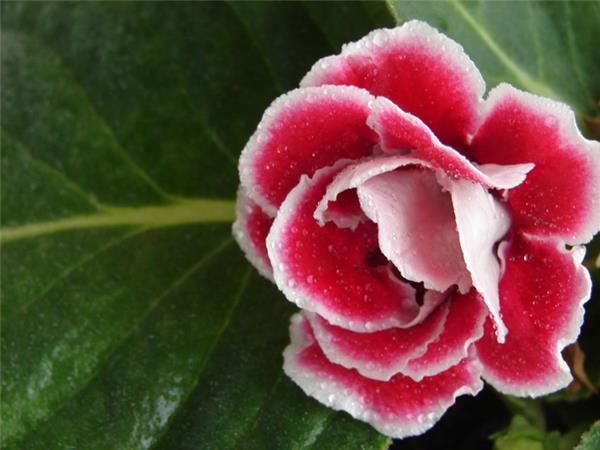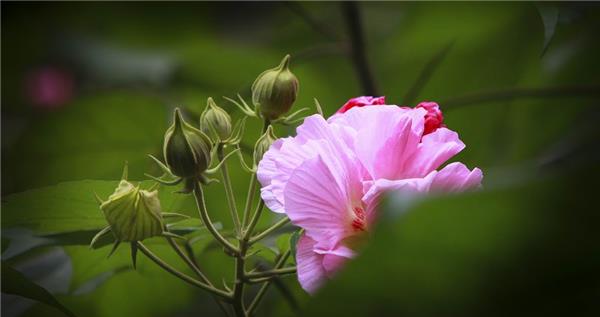Breeding and breeding methods of hibiscus how to raise hibiscus to look good
Hibiscus has beautiful flowers, rich colors and a long flowering period, so it is a plant that can effectively beautify the surrounding environment, so it will be a good choice to improve our quality of life after learning some techniques to cultivate it.

The breeding mode of hibiscus
Sowing: harvest the fruit from November to December and knock out the seeds after drying and cracking. The seeds are protected from the scorching sun. The dried seeds were stored indoors in a cool and dry place and sown from March to April in the following spring. Soaking seeds in 45 tons of warm water for 2-3 hours before sowing. The bed soil was screened, the bottom water was poured, and the seeds were mixed with fine sand and then removed from the seedling bed in the open field. The seedlings could emerge in 7-10 days, could be transferred after 40 days, and could be planted after 6 months of cultivation.
Cuttings: the sturdy branches with a diameter of 1.2.1.5 cm were cut around October and cut into cuttings 15-20 cm long. The upper end of the cuttings were about 1 cm away from the bud. Each cuttage contained 3 buds, bundled into bundles, and buried in the sand until March-April of the following spring. The cuttings were taken out in the following spring and soaked for 4-8 hours to make them fully absorb water. Then the cuttings were cut at a depth of 2 to 3 of the length of the cuttings, with a plant spacing of 8 meters and a row spacing of 25 meters. Don't hurt the skin when you insert it. After insertion, timely watering and moisturizing, it is very easy to take root, and the seedling height can reach about I meters in the same year. It can also be cut directly in early spring. It can take root 1 month after insertion. The seedling rates of the two methods were higher. The seedlings can be planted in 3 months.
Ramet: before sprouting in early spring. At first, the branches of the tufted mother plant were cut short from 20-30 cm above the base, and then the mother plant was excavated and divided into several ramets. After planting, a new clump of plants was formed by sprouting from the base of the branches, which could bloom in the autumn of the same year.
Striping: from July to August, the branches are buried in the soil for more than one month, and the branches pressed in the soil take root. After one month, the branches can be cut off from the mother plant and survive the winter.

Culture method of hibiscus
Habits: humid and warm areas, not cold-resistant and drought-resistant. It is suitable for growing in sunny places, resistant to semi-shade, has low requirements for soil, and can live in fertile, moist and well-drained soil, but it can still grow in barren areas.
Watering: hibiscus is not tolerant to drought. It is necessary to maintain sufficient moisture in the growing season to ensure the growth demand of hibiscus. In the flower bud color should be properly buckled to control the growth of its leaves, so that nutrients concentrated on the flowers, in winter to reduce watering.
Temperature: hibiscus cold resistance is poor, winter should be moved into the room, to ensure that the temperature is controlled at 0-10 ℃, let hibiscus sleep naturally.
Fertilization: hibiscus needs to apply more fertilizer and water in spring sprouting period, and a small amount of phosphorus and potassium fertilizer should be applied before and after flowering. Ditches can be made around the plant every winter or spring and some mature organic fertilizer can be applied to make the plant grow exuberantly and bloom luxuriantly.
Pruning: hibiscus needs to be pruned frequently to maintain its beauty. More importantly, it will be trimmed into a shrub, and withered branches and leaves will be removed to keep the whole crown well ventilated and transparent.

Insect pests: the most common pest of hibiscus is the common red leaf mite, which can be sprayed with 73% propargite 3000 times or 20% dimethyl ether EC 1000 times. Small green leafhopper and cotton leafhopper are also common pests of hibiscus, which can be sprayed with 5% carbaryl powder.
Land planting management: hibiscus is generally planted on the edge of the pond or in the sunny part of the courtyard, extensive management can also be done. Water more in the dry season, cut off all the hibiscus branches before winter, or truncate the plants 5 meters from the ground, and cultivate the roots of hibiscus to ensure safe passage through the winter. When the soil is removed and cultivated in the spring next year, new branches will appear on the old plants.

Hibiscus flowers bloom exuberantly, the flowering period is long, can reach at least a month, is a very ornamental flowering plant. Can be planted in the courtyard to beautify the environment. But also potted culture, placed indoors, pleasing to the eye.
- Prev

What is the knowledge introduction of white lilac
What is the knowledge introduction of white lilac
- Next

Is the hibiscus tree the same as the hibiscus flower? introduction to the knowledge of hibiscus tree
Is the hibiscus tree the same as the hibiscus flower? introduction to the knowledge of hibiscus tree
Related
- Wuhan Hospital Iron Tree Blooming Result Was Instantly Frightened by the Gardener Master
- Which variety of camellia is the most fragrant and best? Which one do you like best?
- What is the small blue coat, the breeding methods and matters needing attention of the succulent plant
- Dormancy time and maintenance management of succulent plants during dormancy
- Minas succulent how to raise, Minas succulent plant pictures
- What are the varieties of winter succulent plants
- How to raise succulent plants in twelve rolls? let's take a look at some experience of breeding twelve rolls.
- Attention should be paid to water control for succulent plants during dormant period (winter and summer)
- Watering experience of twelve rolls of succulent plants
- Techniques for fertilizing succulent plants. An article will let you know how to fertilize succulent plants.

